
Minneapolis Passive House: The Home That Makes Money
Last Updated: Feb 4, 2025Kathryn and Chris Johnson started talking about their dream home even before they got married. Kathryn’s parents both grew up on farms, instilling in her a kind of “back to the land” sensibility. Chris remembers drawing houses with his brother for summertime entertainment in the cool basement when it was hot outside and was influenced by the energy crisis of the 1970s.
But perhaps the biggest impact on their journey toward building their Net Zero Energy Passive House was their time visiting and living in Germany over the past 25 years, where Passive House principles are more prevalent. “We learned how Germans built homes, and a lot of the ideas struck us as much more practical and comfortable than the most common American methods."
So when the opportunity came along to build, they knew they wanted to pursue the Passive House certification. When they started the building process, they gave a name to their new home and set up a blog: SweetTreePassiveHouse (they tap the maple trees on their property to make maple syrup; they also have a crab apple tree, peach tree, and apple tree, hence the name). The beauty of this blog is its authenticity—these are two people that set their sights on building a more practical, comfortable, and beautiful home, which will happen to not have any energy bills.
Table of Contents
- 1. No Natural Gas
- 2. It’s All About the Building Envelope
- 3. Comfort
- 4. Locally Beautiful
- 5. Money Generating

Rise caught up with them just days before their move-in to a brand new, soon-to-be-certified Passive House, located in a western suburb of Minneapolis. The custom-design of the home did make it more expensive. But oh, it is worth it! Why? It’s so hard to choose, but here are the five coolest features of their home.

1. No Natural Gas
This is essential for our society’s transformation to a clean energy economy, commonly called electrification. That means no gas heater, no gas stove, no gas fireplace. How? The technology exists: induction stoves are leaps and bounds better than the old electric stoves that were hard to clean and hard to control the heat level. Electric heat pumps to cool and heat the house have become much more efficient. Hot water is heated with an AO Smith air-to-water heat pump. The benefit of no natural gas is threefold:
- Better indoor air quality and a healthier home. First, no fossil fuel burning in the home means no carbon monoxide, nitrous oxides, volatile organic compounds, or other harmful emissions that can detrimental to your health—including no greenhouse gas emissions, which contribute to global climate change.
- Energy efficiency. Second, no combustion means no fumes to vent outside, eliminating the need for additional holes in the home (which would lead to a leakier house).
- Safety. In previous homes, the Johnsons were aware of three different natural gas explosions in neighboring homes, and they frankly just wanted to make the safer choice. When you think about it, it’s a little crazy how most of us do not ever think about the highly combustible gas lines running underneath our yards and into our homes!
Save Energy
Shop home improvement products that help save and conserve energy (power) in your home.
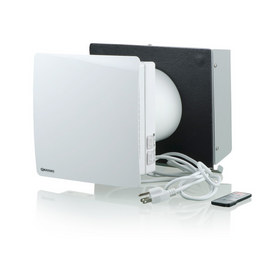
Vents TwinFresh Comfo RA1-50-2 Ductless Energy Recovery Ventilator
Vents
In Stock

AFM Safecoat Almighty Adhesive Case of 12
AFM Safecoat
In Stock

Emporia Classic Level 2 48 AMP EV Charger UL Listed
Emporia
In Stock
2 Colors

Stiebel Eltron Accelera 300 E Heat Pump Water Heater
Stiebel Eltron
In Stock
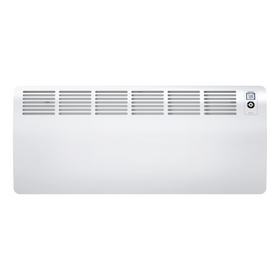
Stiebel Eltron CON 300-2 Premium Wall-Mounted Convection Heater - 202030
Stiebel Eltron
In Stock
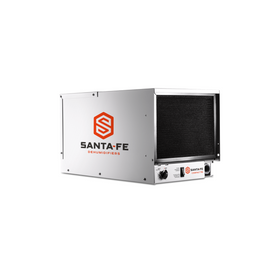
Santa Fe Compact70 A2L Dehumidifier
Santa Fe
In Stock

AFM Safecoat 3 in 1 Adhesive
AFM Safecoat
In Stock
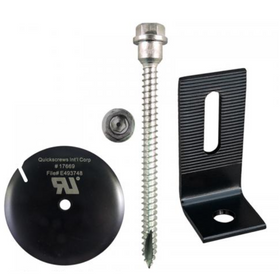
QuickBOLT QB2 with Microflashing Multi Roof Mount Solar Panel Fastener Kit
QuickBOLT
In Stock
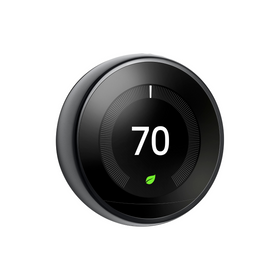
Google Nest Learning Thermostat
In Stock
6 Colors

Stiebel Eltron DHC-E 8/10-2 Plus Point-of-Use Electric Tankless Water Heater - 202145
Stiebel Eltron
In Stock

2. It’s All About the Building Envelope
The central tenet of a passive house is its windows’ orientation toward the sun in order to take advantage of the sun’s free heat in the winter while having shading on that side in the summer to keep it cool. The home needs to keep that heat inside, which means the walls, windows and doors have to be super well insulated—and where they come together must be tightly sealed so there are no air leaks. The Johnson’s home accomplishes this through insulated concrete forms (ICF)—8 inches of concrete plus foam insulation + stucco = 24-inch walls. They chose German-made Muller Schreinerei triple-pane windows—aluminum on the outside and wood on the inside—rated for Passive Haus, with an astonishingly low U factor (which measures a window’s resistance to heat flow). Opening and closing the windows and doors is like opening and closing a safe. It is so airtight that their blower door test came back with 0.35 air changes per hour (ACH) at 50 Pascals pressure. For context, building code in Minnesota was recently lowered from 5 ACH to 3 ACH (at 50 Pascals); LEED Homes v4 will give you two points for a blower door test that comes back at 2.0 ACH or less. Now that is a tight building envelope!

3. Comfort
We all like to be comfortable, and our thinking evolves as we discover new materials or technologies that we would like (and never knew we wanted!). In-floor heat, for example, is a game-changer for homes located in cold climates—so that was initially Chris and Kathryn’s hope. But once they came across the concept of a Passive House, they realized that you could build a home so well insulated that you did not need in-floor heating: the floors never get cold! “That’s the solution to the comfortable house,” Chris says. The additional benefit of a well-insulated home is how quiet and draft-free it is. Won’t the indoor air get stuffy and stinky? No, the tightness of the home is balanced with a very low-speed Energy Recovery Ventilator (ERV), along with a Zehnder ComfoFond-L Eco 550—a geothermal heat exchanger used to pre-heat or pre-cool outdoor air before it reaches the ERV—to efficiently bring in fresh air 24/7.4.

4. Locally Beautiful
One of the first things you notice about the home is its beauty—filled with natural sunlight, exposed concrete walls, wood floors and trim. The wood was obtained from various local sources: an old elm tree from their previous yard; maple stair treads from their son’s godfather who collected and sold local hardwoods to artists. Some materials, including Corian pieces, lights, and doorbell chimes, were sourced from online neighborhood postings–which also helped the Johnsons reduce their upfront cost. Among all the natural materials are primary color accents on each floor, showing up as a red stripe in the Corian countertops, or through the blue, red, or yellow Marmoleum flooring in the kitchen and bathrooms. While the main roof of the house has a south-facing 45-degree angle (ideal for solar panels), the flat roof of the garage is green (meaning full of plants)—further insulating the garage and providing a gorgeous view of a garden from the second floor of the home.

5. Money Generating
Passive Homes are meant to utilize 80%-90% less energy than their conventionally built counterparts, so you’d expect Johnson’s energy bills to be very low. They will use electricity for cooking, some heating and air conditioning, ventilating, washing, and other appliances and electronics—and that electricity has to come from somewhere. In keeping with locally produced materials, Chris and Kathryn are producing their own electricity as well, with a 9.1-kilowatt system of solar photovoltaic panels on their roof. What size system should produce enough electricity to more than cover their consumption? With Xcel Energy’s net metering program, Xcel Energy will be paying the Johnsons for any extra electricity they produce over and above what they consume over time. And because of their solar-charged battery for back-up power, Kathryn notes, “Even if the power went out for two weeks, we wouldn’t have to worry about the pipes freezing.”

Those are some of the coolest things about the house. But truly the best thing about this project is the homeowners themselves: Kathryn and Chris Johnson are setting an example for us all of what can be done, how their home represents their values, and after competently accelerating up the learning curve, happily sharing their knowledge with the world.
Melissa Rappaport Schifman
Melissa became the Twin Cities’ fifth LEED for Homes Accredited Professional (LEED AP) and completed the work necessary to get her own home LEED Gold Certified, the basis for her book, Building a Sustainable Home: Practical Green Design Choices for Your Health, Wealth, and Soul, (Skyhorse Publishing, August, 2018). With her corporate experience in finance, marketing, and business development, and an MBA and Master’s in Public Policy from the University of Chicago, Melissa has been providing sustainability advisory services to businesses, governmental agencies and non-profits, focusing on strategic and operational change that provide bottom-line financial returns. She has led the LEED certification of two million square feet of commercial buildings, written GRI-compliant Corporate Sustainability Reports, is a LEED Pro Reviewer and LEED mentor with the U.S. Green Building Council. She is the founder of Green Intention LLC where she writes about sustainable home living.
